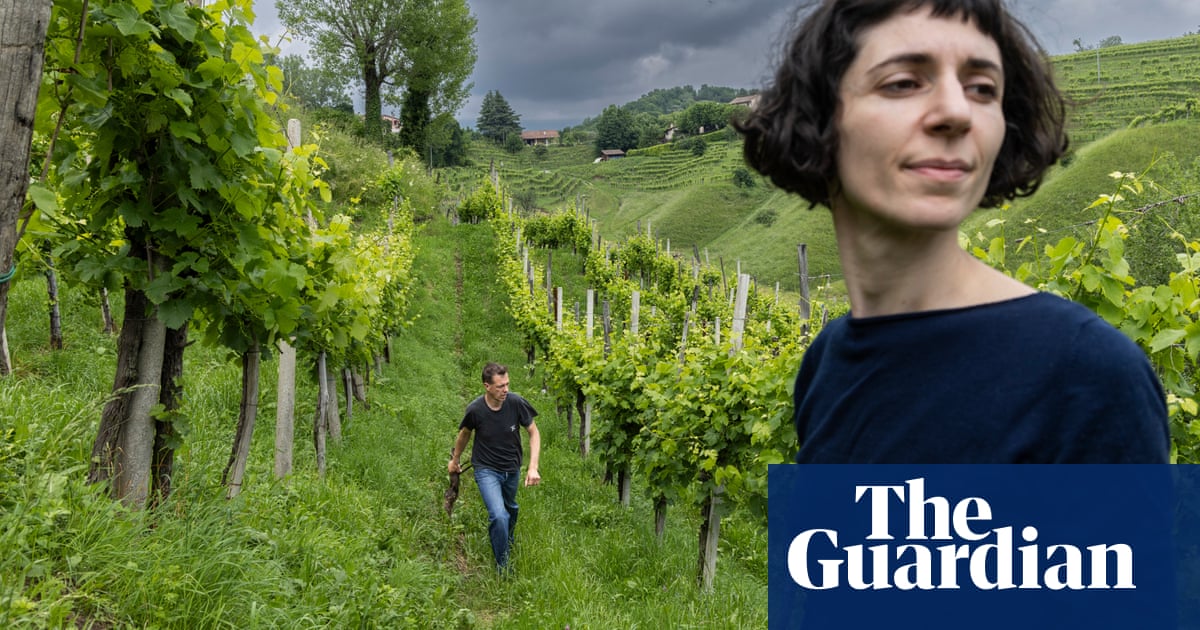Paola Ferraro marches through the neat grids of vines that chequer the slopes of Monfumo and rattles off the number of ways violent weather hurts her family’s prosecco production.
Spring frost kills buds, summer hail storms thrash leaves, long droughts starve vines of water, while strong rains spark landslides that drown them in mud.
In the rugged hills of Asolo, halfway between the canals of Venice and the peaks of the Dolomites, the farmers that produce prosecco, one of the most popular sparkling wines in the world, have been plunged into crisis mode by the tempestuous weather that has arrived with the climate crisis.
“It feels like there’s no time,” says Ferraro, from Bele Casel winery, whose grandmother lit candles and prayed during once-rare hail storms that have started to hit earlier in the year and pack more of a punch. “It’s changing so fast.”
Climate change is affecting wine producers everywhere. A study in Nature found that by the end of the century 90% of traditional wine regions could disappear from coastal and lowland parts of Spain, Italy, Greece and southern California.
Prosecco is particularly sensitive to volatile weather. When rain falls hard in the “hogback” hills of Valdobbiadene and Conegliano – a Unesco heritage site that, along with Asolo, makes the most exclusive labels – the steep slopes that grow glera grapes can quickly morph into torrents of fast-flowing earth. During long periods of drought, any water that does hit the sun-crusted inclines washes straight off.
“The impact of the two extremes is one thing on a plain, but it’s totally different on a steep slope,” says Paolo Tarolli, of the University of Padova, who studies the effects of climate change on wine terraces.
At the Vinitaly trade fair in Verona, where well-heeled wine dealers swill glasses of their finest, prosecco producers say the sector has only just woken up to the scale of the threat.
Nicola Ceschin, from the Sanfeletto winery, says that in the last couple of years “the debate has been opened, and it has become more and more lively. But in terms of practical action, I don’t know if much has really moved.”
Farmers can adapt to many of the changes, says Gregory Gambetta, a plant biologist at Bordeaux Sciences Agro and co-author of the Nature study. But customers place so much emphasis on a wine’s identity that it is “a completely different beast” to other foods threatened by global heating.
“The big fear is not: ‘I’m going to wake up and the climate change is so extreme I can’t grow grapes any more’,” says Gambetta. “The fear is that: ‘This product we always made – that everyone always loved – that they [the customers] don’t like it any more’.”
Sipped straight or mixed in a spritz, prosecco has had a boom in popularity over the last two decades, but green groups and some people in northern Italy have blamed the scale of the industry’s expansion for damaging the local environment, prompting pledges from producers to better protect ecosystems.
Some farmers have already started to change their practices. Black nets dot the green terraces of Valdobbiadene to guard grapes from hail. Some producers, taking a more experimental approach, have used cannon-style equipment to blast gas into clouds to stop stones from forming.
Others rely on natural solutions; Ferraro uses fig trees to shade the grapes and cool the vines. The trees also encourage a richer mix of wildlife, shelter plants from strong winds and keep soil stable in heavy rain.
after newsletter promotion
There’s a reason trees were planted in vineyards from 100 years ago, says Ferraro. “It’s not just because they look good.”
Scientists have also looked to the past to deal with drought. Just a few generations ago, says Tarolli, farmers often built small ponds into the slopes to collect water. These “microwater storage systems” are still a common sight on terraces in south-east Asia and east Africa, he says, but the practice has mostly been lost in northern Italy.
To help farmers save water, Tarolli flies drones over slopes to build 3D models with which he can simulate rainfall patterns. He then uses these to find the best areas to build ponds, which farmers can connect to drip irrigation systems to water drier parts of the vineyard.
“It’s a low-cost intervention,” says Tarolli. “A mixture of ancient knowledge merged with modern technology.”
But even as such practices begin to take off, farmers say they have little control over the increasingly violent weather. At the Bresolin vineyard, which was founded by three brothers from a winemaking family who wanted to turn to organic farming, the years of drought and hail have led to a constant state of acute stress.
“The stress of the plant and the stress of the producer increases every year,” says Valentina Pozza, Bresolin’s export manager. “It’s your job, it’s your life, you live thanks to what the vineyards give to you.”
Though they try to adapt, she says, the lack of certainty leaves farmers feeling powerless.
“You cannot decide if there will be drought or rain or hail,” she says. “You wait and hope that everything will be OK. You try to do the best you can, but it’s not you who decides.”







